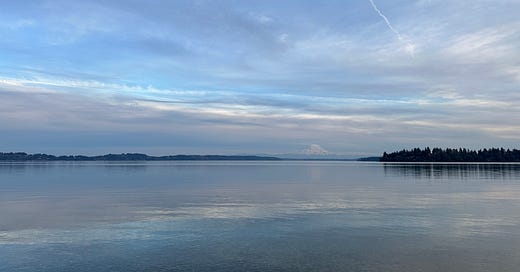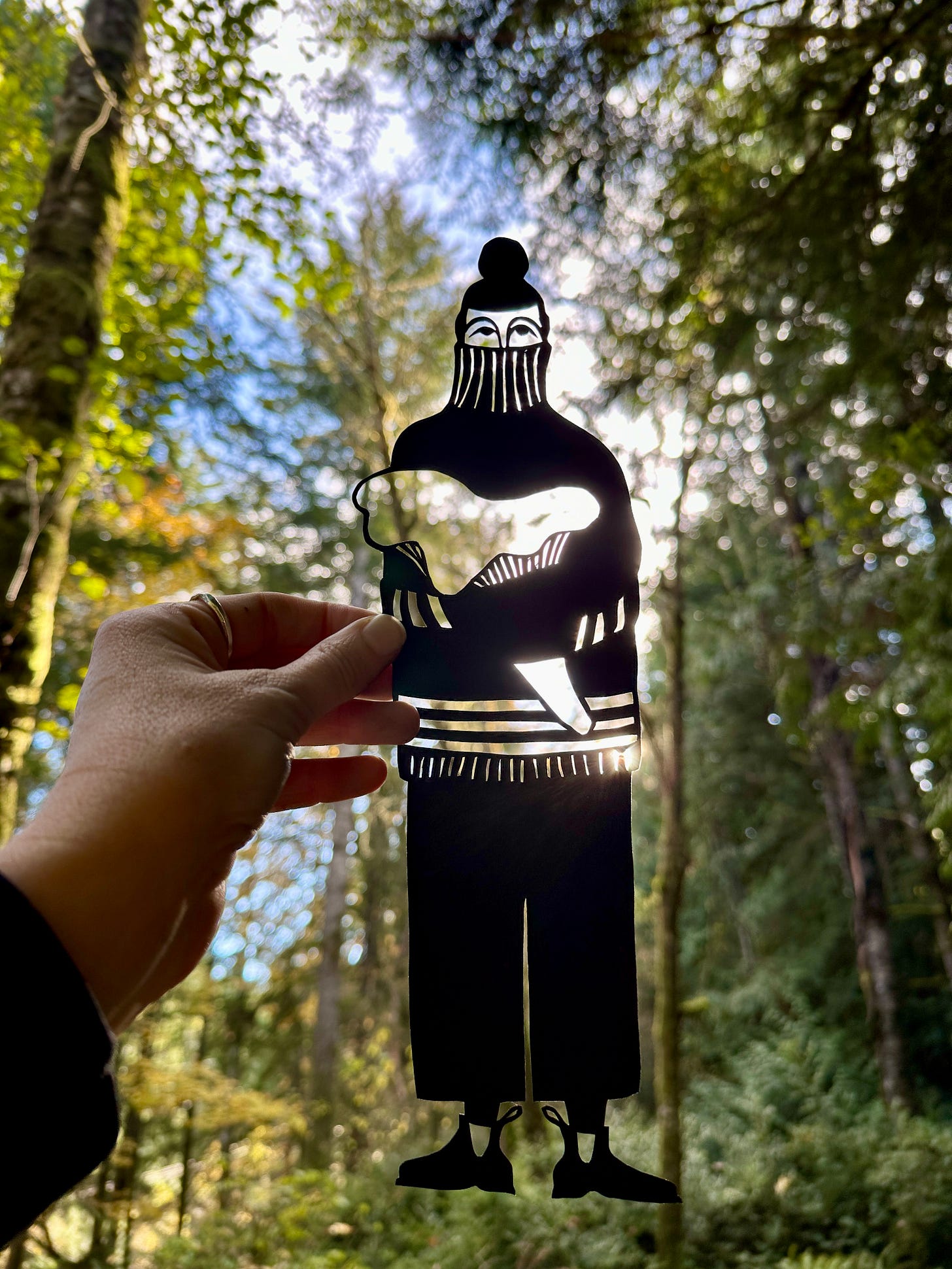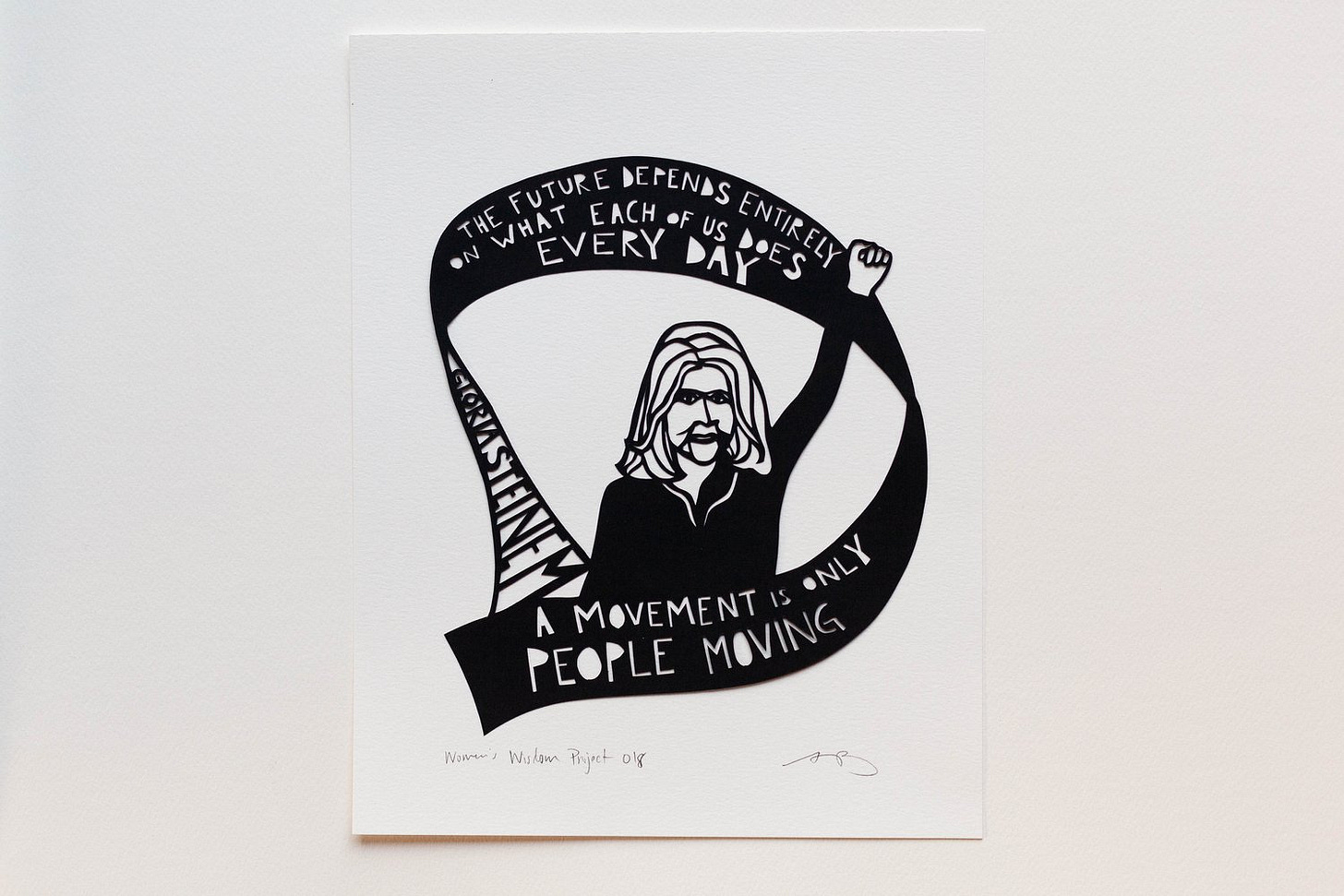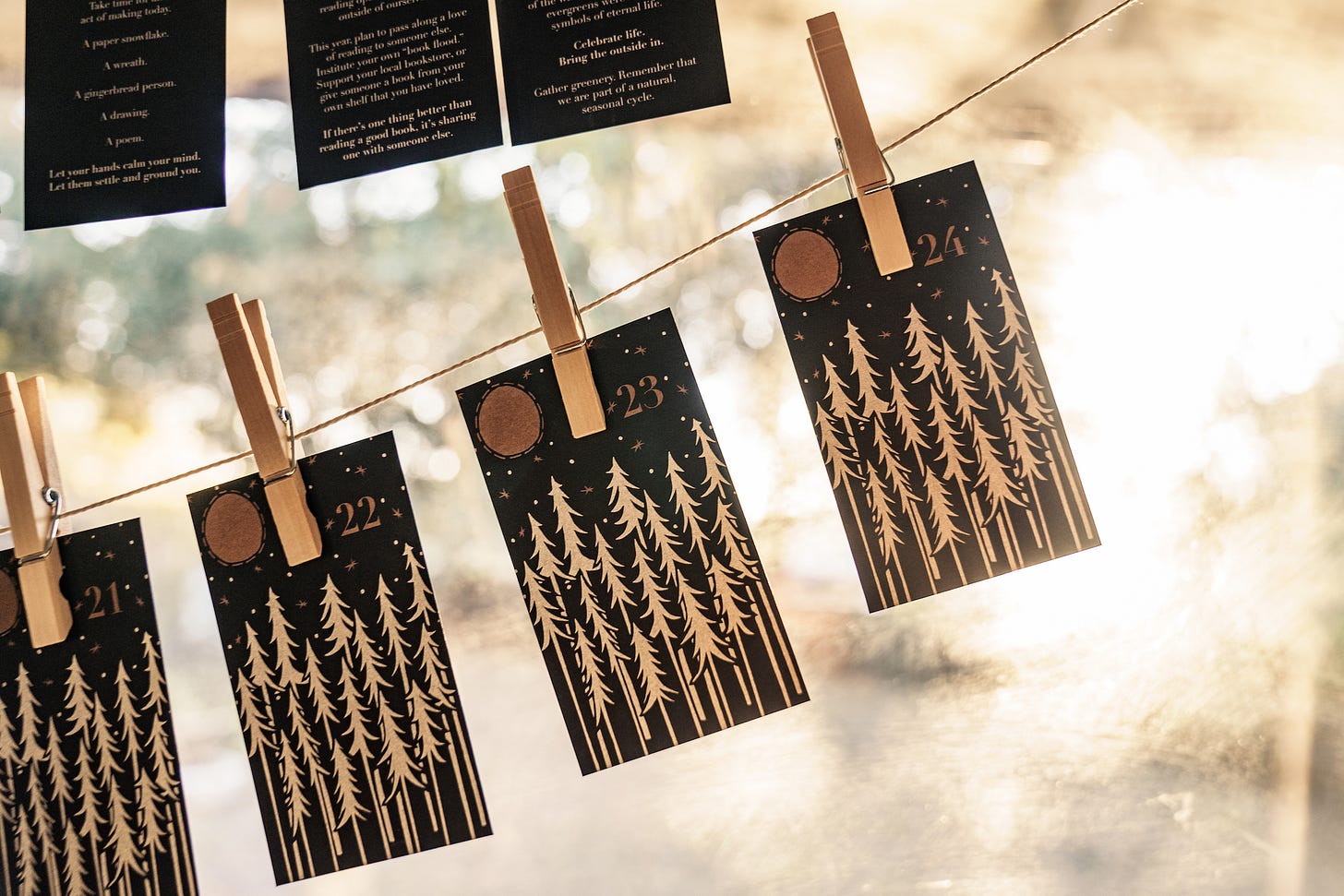Hello friends,
You may have seen this Toni Morrison quote going around this week about the responsibility of an artist in the face of turbulent times:
“This is precisely the time when artists go to work—not when everything is fine, but in times of dread. That’s our job.”
It’s from an essay called “No Place for Self-Pity, No Room for Fear” that was included in The Nation’s 150th Anniversary Special Edition.
Christmas, the day after, in 2004, following the presidential re-election of George W. Bush.
I am staring out of the window in an extremely dark mood, feeling helpless. Then a friend, a fellow artist, calls to wish me happy holidays. He asks, “How are you?” And instead of “Oh, fine—and you?”, I blurt out the truth: “Not well. Not only am I depressed, I can’t seem to work, to write; it’s as though I am paralyzed, unable to write anything more in the novel I’ve begun. I’ve never felt this way before, but the election….” I am about to explain with further detail when he interrupts, shouting: “No! No, no, no! This is precisely the time when artists go to work—not when everything is fine, but in times of dread. That’s our job!”
I felt foolish the rest of the morning, especially when I recalled the artists who had done their work in gulags, prison cells, hospital beds; who did their work while hounded, exiled, reviled, pilloried. And those who were executed.
In the essay, she outlines the strategies that dictators and tyrants use, one of them being to “limit or erase the imagination that art provides.” Erosion of imagination is a clear path to control and suppression. As is the erosion of joy, of hope, of celebration.
“Dictators and tyrants routinely begin their reigns and sustain their power with the deliberate and calculated destruction of art: the censorship and book-burning of unpoliced prose, the harassment and detention of painters, journalists, poets, playwrights, novelists, essayists.”
Imagination then is a radical act. Not a superfluous or superficial thing, but an essential part of survival.
Morrison concludes her essay:
“I remember the shout of my friend that day after Christmas: No! This is precisely the time when artists go to work. There is no time for despair, no place for self-pity, no need for silence, no room for fear. We speak, we write, we do language. That is how civilizations heal.
I know the world is bruised and bleeding, and though it is important not to ignore its pain, it is also critical to refuse to succumb to its malevolence. Like failure, chaos contains information that can lead to knowledge—even wisdom. Like art.”
I’ve been turning to words like this all week as I cycle through a combination of anger, sadness, and numbness. I do not need to tell you that things feel heavy.
I find myself grappling with “sit with the feelings” versus “figure out what to do” energy. I am a problem-solver by nature. If there’s an issue presented, I want to find a workaround. This is a reliable skill for making art and writing, for working around blocks, but the downside is that I can often push through feelings and emotions. Make the leap to figuring out how to “fix” the situation instead of feeling the situation. Just keep moving.
I think a lot of us have this tendency, in part fueled by a capitalist economy that tells us we don’t have the time to dwell or rest, we must get on with it. This is compounded for any group or community who bears the burden of oppression and has to continually fight against it—the reason that organizations like the Nap Ministry and the Loveland Foundation exist.
Yet as I’ve read pieces this week about how to move forward in the wake of this election, I’ve been reminded that in this moment we do need to allow ourselves to really feel the full weight of our reality. That we must name what we feel, grieve what we will lose. We have to sit with those feelings so that eventually they galvanize us to move forward.
The other main themes that keep appearing are connecting with community and continue building. In other words: feel what you feel, surround yourself with people, keep doing the work.
In a “what do I do?” state, on Thursday I attended a mass call hosted by the Working Families Party. It was full of inspiring community leaders and activists. The words that have stuck with me from that call are those of Ash-Lee Woodard Henderson, who reminded us that the call was intended to provide, “grounding, solace, direction.”
Grounding, solace, direction. It’s a another version of the same formula: feel what you feel, surround yourself with people, keep doing the work. As Tarso Luís Ramos of Political Research Associates said, “action with others is the best antidote to despair.” A good argument for getting your creative cohort going.
That action looks so different for everyone. In her essay “A Few Rules For Predicting The Future,” Octavia Butler recounts a student who asks her if she really believes that the futures she writes about in her books are really going to happen.
“I didn’t make up the problems,” I pointed out. ‘All I did was look around at the problems we’re neglecting now and give them about 30 years to grow into full-fledged disasters.”
The student of course asks her what the answer is.
“There isn’t one,” I told him.
“No answer? You mean we’re just doomed?” He smiled as though he thought this might be a joke.
“No,” I said. “I mean there’s no single answer that will solve all of our future problems. There’s no magic bullet. Instead there are thousands of answers–at least. You can be one of them if you choose to be.”
What will we choose to be?
When we think about fighting, resisting, and challenging the status quo, we’re often focused on what we are against. But it’s equally important to ask: what do we stand for?
That’s a question that informs our politics, but it’s also a question that informs our creative practice. It’s what provides a sense of direction, a compass. It’s how we weave our values into what we create, whether that’s a protest poster, a meal, a poem, a gathering.
There is no way to sugarcoat this moment. Lives are at risk. We have a responsibility to stand up, advocate for, and protect those of us who are most at risk.
As artists, as creatives, as cultural workers, we also have a responsibility to imagine, to dream, to celebrate, to inspire, to connect, to love.
Artist Claudia Solis shared this week that back around the 2016 election, she was in art school. She was miles from home, and feeling alone. “I had a teacher tell me to channel my feelings into art. That art was love, that making art was a rebellion, that people need art more than ever.”
I think we’re back at that place right now and need the reminder that art is love, art is rebellion, art is solace, art is change. We need it all.
Albert Camus wrote about the intersection of art and rebellion, in his book The Rebel: An Essay on Man in Revolt1.
“Art is the activity that exalts and denies simultaneously. ‘No artist tolerates reality,’ says Nietzsche. That is true, but no artist can get along without reality. Artistic creation is a demand for unity and a rejection of the world. But it rejects the world on account of what it lacks and in the name of what it sometimes is.”
We see what is and we respond.
This creative response is also our civic response, our community response—it’s why creativity is an essential part of a robust, functioning society. When I say “creative response,” I don’t necessarily mean how we respond to something by making a piece of art. Instead, I mean how we apply creative thinking as a response to the situation at hand.
In my mind, creative response involves a few components:
Creative response is rooted in feeling. Creativity is an embodied experience. Ideas stem from feeling. We have to sit with something to begin to understand it, to determine what we will do with it.
Creative response is led by curiosity and empathy. Creativity comes from assessing, learning, and admitting to the unknowns. Our path is charted by the questions we ask, not the answers we think we know.
Creative response requires out-of-the-box and future thinking. Creativity is about making unexpected connections, it is generative and inherently hopeful, simply because we start from the idea that we will create something that has not existed before.
Creative response is connected to what has come before and what is already present. Creativity does not happen in a vacuum, it is informed by the world around us and the ideas that came before us. We may be working at creating something new, but there are longstanding movements and efforts for us to tap into.
To respond doesn’t mean to take immediate action. Response is informed by patience, by sitting with a feeling, seeing how it will move you forward. To be blocked in our words and our actions—like many of us may have felt this week—is a part of that process.
Late yesterday afternoon a friend texted me.
“How does one convince themselves that being an artist is enough?”
You know, just a chill, casual existential question for a Friday afternoon. It had been a long week.
I didn’t overthink my response, I just typed back what felt true.
“Being an artist is enough because being an artist is EVERYTHING. It’s the most human thing that you could do.”
I could take time to overthink that statement, rework it, poke holes in it. But I actually do believe it.
We are humans. We feel. We respond. We create.
In doing so, we move forward.
-Anna
Two upcoming things to bring joy and connection
—> Wednesday November 13, 5-6:30pm PT: Create+Engage November Session
This is our final Create+Engage session of this year.
, and I have decided to wrap things up with a session devoted to highlighting creativity and community. If you’re in need of a little time to ground and connect, this is it. For anyone who used to come to the original Creative Fuel Wednesday sessions, this is going to have a little of that energy. Bring your sketchbook, some art supplies, and come join us in creative community.—> 24 Days of Making, Doing, and Being Digital Advent Calendar
I was going to send the “my annual digital Advent calendar is coming up soon!” announcement this week, but we all know how this week went. That being said, it is coming, and I am feeling that we might need it more than ever.
The short version is: this is my 8th year doing a digital Advent calendar that’s devoted to creating a little space for presence, joy, and gratitude. I’ll send more info next week, especially for those of you that are new here and have no clue what I am talking about. But if you want to get ahead of the game there’s 20% off annual subscriptions between now and November 17th.
Oh and also there’s a print Advent calendar deck if you’re feeling like you’re going to be in need of some light at this end-of-year season.
The thing that brought me the most joy this week was watching Jon Batiste hearing a Green Day song for the first time and play along, followed by watching 12-year-old prodigy Jude Kofie play piano along to a Jon Batiste song. Seriously this is the most joyful antidote to this week.
Artists, writers, and filmmakers on the art that they are turning to for solace.
Ross Gay’s “Sorrow is Not My Name”
If you like getting Creative Fuel in your inbox, I’d love it if you considered becoming a paid subscriber.
Paid subscriptions keep this newsletter alive. Plus we have 24 Days of Making, Doing, and Being coming up in December!
Do you enjoy Creative Fuel? You can support this work by becoming a paid subscriber. You can also order something in my shop, attend one of my workshops or retreats, or buy one of my books. Or simply share this newsletter with a friend!












Thank you. I can almost not tolerate words this week. Reading this, maybe my action of plunging daily to soothe my grief might actually be plunging daily to create the opportunity to hear words. Yours are beautiful. Art makes sense. Analysis, not so much.
Thank you so much. And I absolutely love your latest papercut.